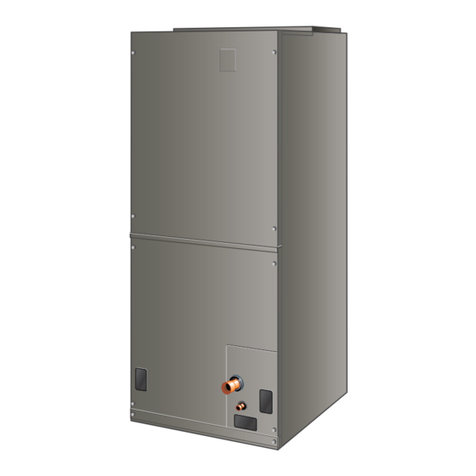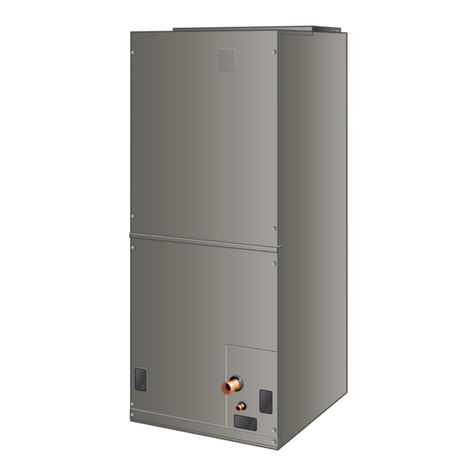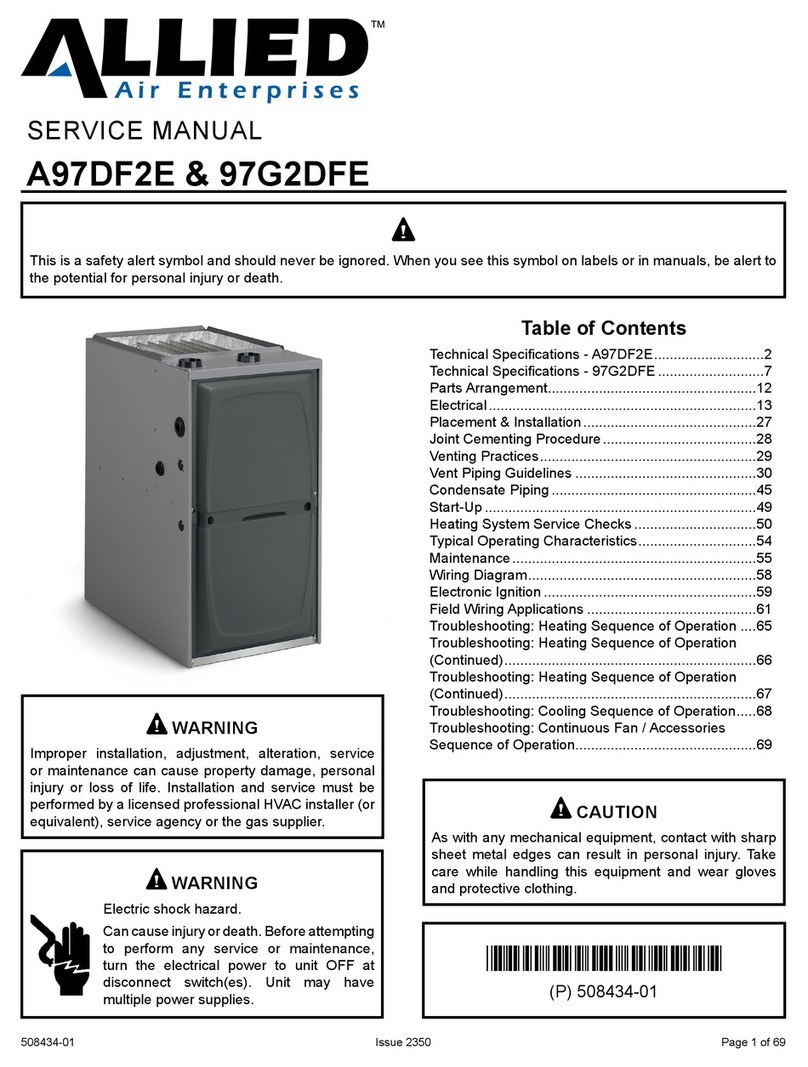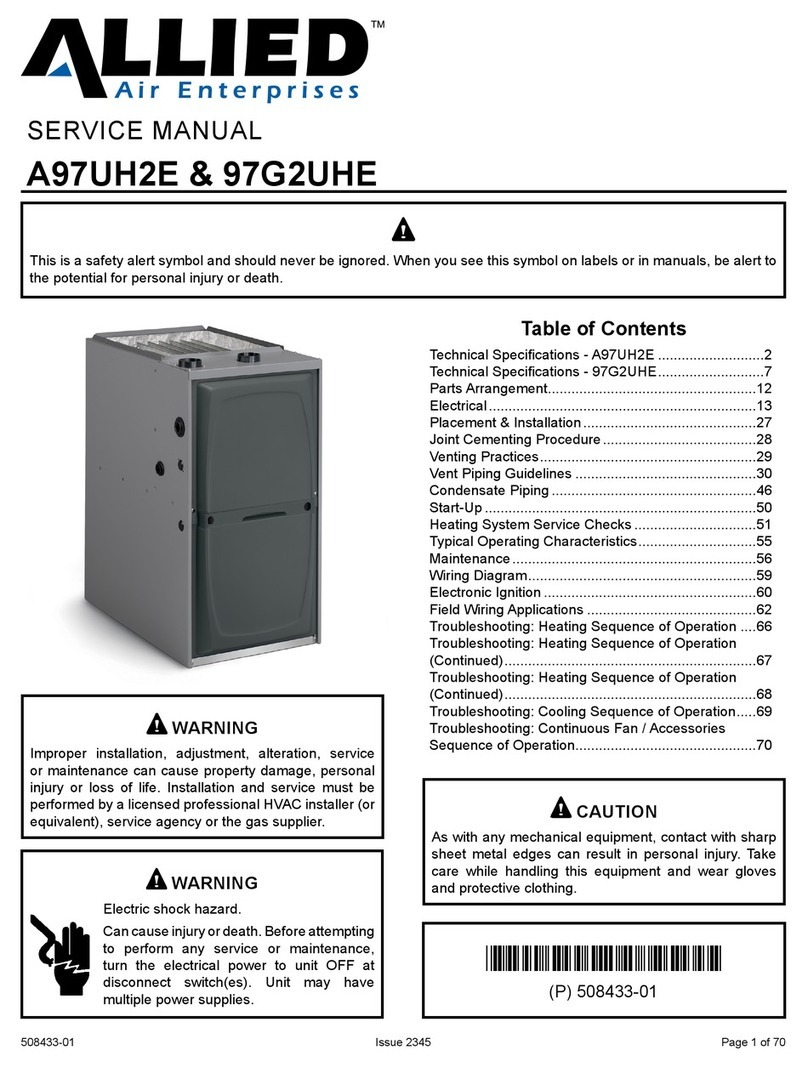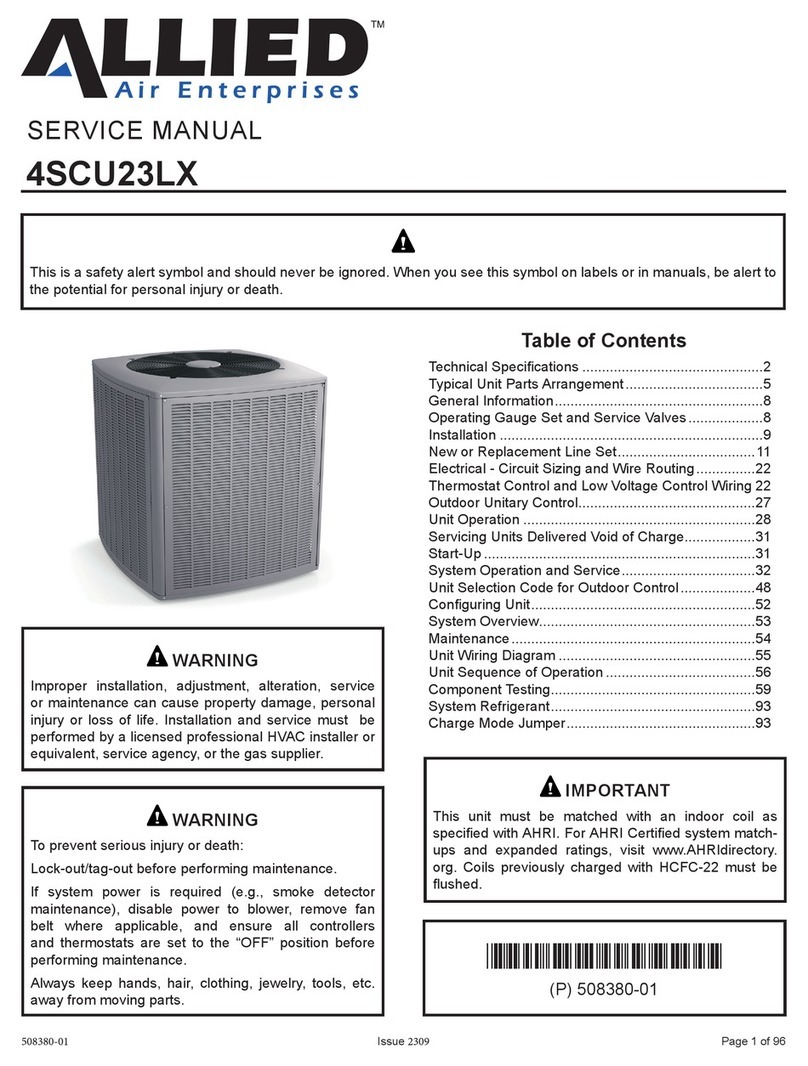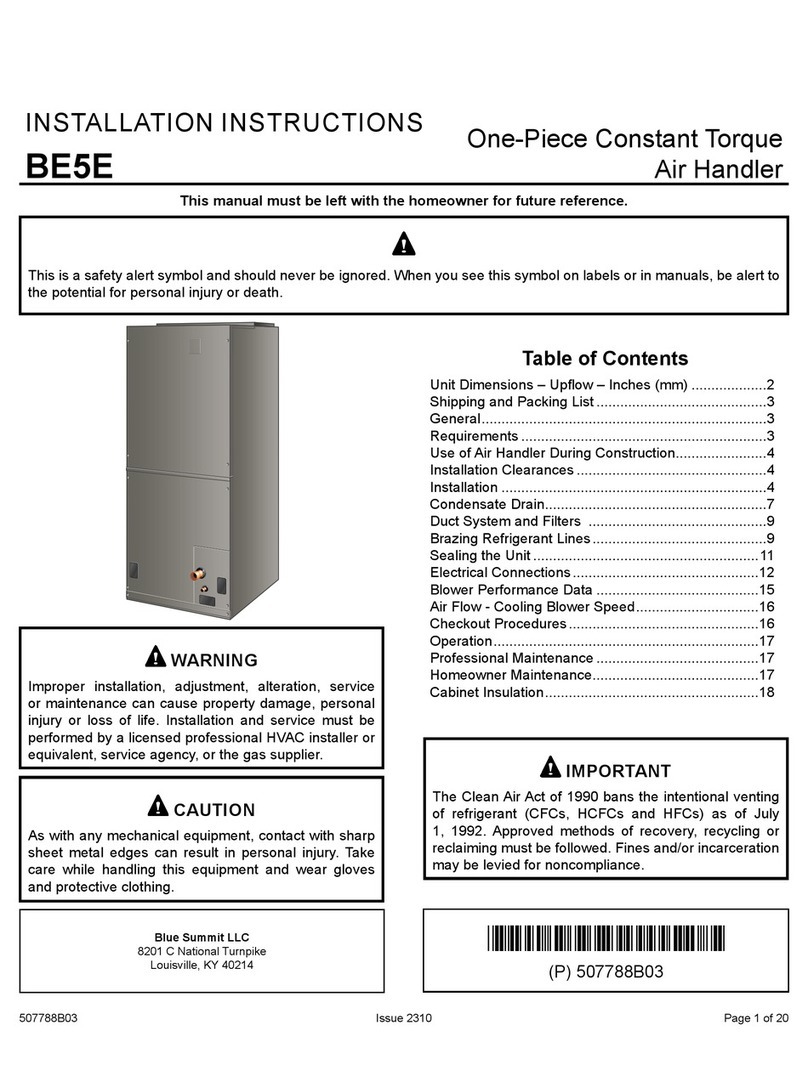
508097-01Issue 2039Page 8 of 64
Pin # Function
1Ignitor
2 Combustion Air Inducer High Speed
3 Combustion Air Inducer Low Speed
4Combustion Air Inducer Neutral
5Ignitor Neutral
Table 1. 5-Pin Terminal Designations
Pin # Function
1Gas Valve Second Stage
2 Second Stage Pressure Switch
3 Rollout Switch In
4Ground
524V Hot
6Primary Limit In
7Gas Valve First Stage
8Gas Valve Common
924V Neutral
10 Ground
11 Primary Limit Out
12 First Stage Pressure Switch
Table 2. 12-Pin Terminal Designations
Electric Shock Hazard.
Can cause injury or death. Unit must be
properly grounded in accordance with
national and local codes.
WARNING
Fire Hazard.
Use of aluminum wire with this product may result in a
re, causing property damage, severe injury or death.
Use copper wire only with this product.
WARNING
Electronic Ignition
At the beginning of the heat cycle the integrated control
monitors the rst stage and second stage combustion air
inducer pressure switch. The control will not begin the
heating cycle if the rst stage pressure switch is closed
(bypassed). Likewise the integrated control will not begin
the second stage heating cycle if the second stage
pressure switch is closed, and will remain in rst stage
heat. However, if the second stage pressure switch closes
during the rst stage heat pre-purge, the control will allow
second stage heat. Once the rst stage pressure switch
is determined to be open, the combustion air inducer is
energized on low (rst stage) heat speed. When the
dierential in the pressure switch is great enough, the
pressure switch closes and a 15-second pre-purge begins.
After the 15-second pre-purge period, the ignitor warms
up for 20 seconds after which the gas valve opens for a
4-second trial for ignition. The ignitor remains energized
during the trial until ame is sensed. If ignition is not proved
during the 4-second period, the control will try four more
times with an inter purge and warm-up time between trials
of 35 seconds. After a total of ve trials for ignition (including
the initial trial), the control goes into Watchguard-Flame
Failure mode. After a 60-minute reset period, the control
will begin the ignition sequence again.
NOTE: During abnormal conditions such as low supply
voltage or low outdoor temperatures and the low re
pressure switch does not close, the combustion air inducer
will switch to high speed. After the low & high pressure
switch close, the unit will proceed with a 15 sec pre-purge,
followed by a 20 sec ignitor warm up, then ignition on
highre. After 10 to 20 seconds of high re operation the
unit will switch to low re.
Two Stage Operation / Thermostat Selection DIP
Switch
The control can be utilized in two modes: SINGLE-STAGE
thermostat or TWO-STAGE thermostat. The thermostat
selection is made using a DIP switch and must be positioned
for the particular application. DIP switch 1, labeled T”STAT
HEAT STAGE is factory-set in the OFF position for use
with a two-stage thermostat. Move the DIP switch to ON
for use with a single stage thermostat.
While in the single-stage thermostat mode, the burners will
always re on rst-stage heat. The combustion air inducer
will operate on low speed and indoor blower will operate on
low heat speed. The unit will switch to second stage heat
after a “recognition period”. DIP switch 2, labeled SECOND
STAGE DELAY, is factory set in the OFF position for a 7
minute recognition period. The switch can be moved to the
ON position for a 12 minute recognition period, after which
time the unit will switch to second-stage heat.
While in the two-stage thermostat mode, the burners will
re on rst-stage heat. The combustion air inducer will
operate on low speed and indoor blower will operate on low
heat speed. The unit will switch to second-stage heat on
call from the indoor thermostat. If there is a simultaneous
call for rst and second stage heat, the unit will re on
rst stage heat and switch to second stage heat after 30
seconds of operation. See Sequence of Operation ow
charts in the back of this manual for more detail.


















